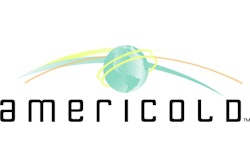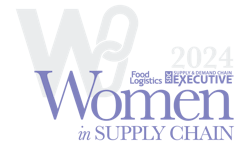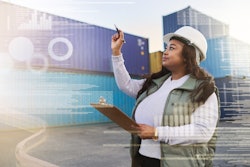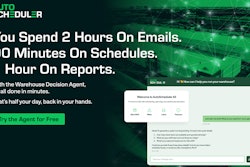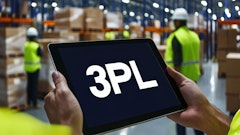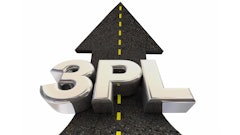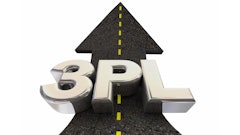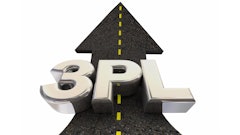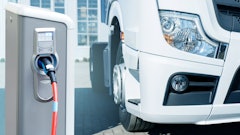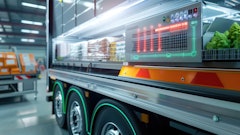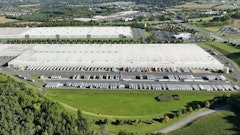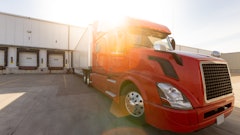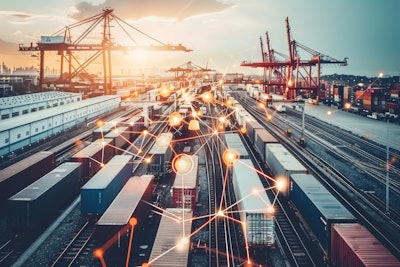
On the brink of 2025, third-party logistics (3PL) providers will find themselves at the center of an industry thrust into revolution. As businesses lean on 3PLs to streamline operations, technology adoption, rising consumer expectations, sustainability pressures and an unpredictable global market will influence the path forward. Here’s a look at the trends shaping the future for 3PL providers, the likely challenges they will face and how providers can position themselves for long-term success.
Technology adoption: automation and AI
The rise of technology in logistics is nothing new, but 2025 could bring a new wave of adoption for 3PLs, focused on automation, data analytics and AI-driven decision-making, and tracking technologies will continue to grow to support compliance with regulations like FSMA.
Mathew Moore, VP of market development at Americold, explains that AI and automation will continue on as strong areas of focus to drive efficiency at a lower cost.
"Adoption of AI has been relatively slow in temperature-controlled warehousing, mostly due to lack of understanding of what it is and what it can actually do," says Moore. "That is all changing pretty rapidly and we anticipate adoption begin exponentially increasing in 2025 as companies re-assess all aspects of their business through an AI lens."
Similarly, Radhika Mulastanam, director, international services at AFS Logistics, says 3PLs will be defined by this AI technology, describing that, "The adoption of AI technologies (at least for the large companies) will help drive efficiencies in their processes, warehouses and other operations. The 3PL that are likely to stand out are those that can not only provide better solutions, but also exhibit the expertise needed to manage them. We see instances, far too often in my opinion, where companies that provide AI solutions struggle with the front-end folks being unable to explain the features and functionalities."
Even in areas for upskilling where eLearning helps organizations provide cost-effective training that will be tailored to their industry and individual needs, explains Mulastanam. Educating employees will help bridge the skills gap that we see quite often and also help address the demand for niche expertise in business areas.
 Perishables in storage.Jiraphiphat/stock.adobe.com
Perishables in storage.Jiraphiphat/stock.adobe.com
As Sara Stickler, CEO and president of the Global Cold Chain Alliance (GCCA), explains, strong year-on-year increase in demand for cold storage is expected to continue well past 2030, with the industry responding with substantial investments into the construction of new sites as well as the expansion and modernization of existing facilities.
"Another key trend in 2025 will be continued investment into cold store energy efficiency, helping refrigeration-based businesses reduce exposure to volatile energy costs. We can expect continued focus on energy efficiency measures such as improvements to insulation, refrigeration system data collection and analysis, and on-site renewable energy generation (mainly roof top solar)," says Stickler.
Meeting consumer expectations for speed and transparency
E-commerce growth continues to redefine consumer expectations, with buyers now demanding near-instant deliveries, real-time tracking and a seamless purchase experience. As markets and consumer patterns change, Stickler explains the necessary evolving of services to be a full supply chain solution for customers. This includes increased involvement in e-commerce to support customer needs.
"Fluctuations in consumer demand in 2024 have brought the pressures associated with volatility in volumes, but if inflation continues to decline and consumer confidence rebuilds the food industry, as a whole, can look to greater stability," says Stickler. "Overall, the increased importance placed on supply chain resilience by the food industry following the disruptions of the past five years is set to continue."
In 2025, 3PLs will face even greater pressure to provide fast, reliable and transparent services.
"There have been multiple studies showing that e-commerce retailers require three times as much total warehouse space as traditional warehouse clients. The big question is how fast will e-commerce continue to grow? On the retail grocery side, online shopping represents almost one-third of the $11.9 trillion in global consumer spend in this space, so it’s already a massive channel," says Moore. "The next question is how much of the additional warehouse space needed will be outsourced? If the trend towards outsourcing continues on a similar path to traditional retail distribution and e-commerce growth continues to outpace store channels, then 3PLs stand to be big beneficiaries in the coming years,"—questions that may need to be examined sooner rather than later.
The challenges ahead
While 3PLs have ample opportunities for growth in 2025, challenges come and go every year. We'll start with supply chain disruptions, which as Moore points out, are obviously problematic because (1) they’re unpredictable and (2) expensive to plan for or hedge against. The incremental costs associated with disruptions and labor shortages have to be passed on as quickly as possible. Moore says it’s when those costs are no longer able to be “priced in”, that companies get squeezed and earnings suffer. Reducing exposure to labor disruptions through automation and AI will be a key focus area for companies with large workforces.
 A truck awaits load at warehouse.KirKam/stock.adobe.com
A truck awaits load at warehouse.KirKam/stock.adobe.com
Mulastanam outlines these two points as major concerns in 2025:
- Labor shortages. Lack of qualified candidates with the necessary expertise in different areas of the business will hinder the ability to grow. Without teammates taking on ownership, middle management and supervisors get sucked into micromanaging the day, leaving them with no time to work on strategy or handling customer expectations. So, focused, ongoing investment in training and skill building will be a huge challenge for companies.
- Supply chain resilience. Ongoing disruptions such as the recent East Coast port strike, geopolitical events and/or other natural or manmade disasters will be challenging to 3PLs and their ability to be agile and responsive to customer requirements. The best way to deal with this is to leverage technology to provide more real time visibility and decision making at different levels, within reason of course. Diversifying sourcing strategies and managing the business effectively particularly in areas of risk management will also be a contributing factor in dealing with disruptions.
Challenges also stem from geopolitical issues including the outcome of the U.S. election and the policies put in place thereafter.
"With the 2024 Presidential Election in the United States, there could and will be considerable unknowns for some time about the full policy implications, as well as the impacts of the election result for the US and global economies. At the same time, we can expect ongoing uncertainty in 2025 regarding international politics and the impacts of war and unrest on global supply chains. Extreme weather events will likely affect U.S. food supply chain operations, either directly or as a result of weather-driven disruptions in other parts of the world," says Stickler.
Driving green logistics initiatives
Sustainability will remain a top priority as consumers, governments and stakeholders demand greener supply chains. In 2025, 3PLs will need to demonstrate a commitment to environmental sustainability and adopt practices that reduce their carbon footprint. That, Moore says, starts with an approach from several different angles — three of which include fleet electrification, built environment and energy efficiency.
"3Pls will move more towards fleet electrification, especially as the technology is getting better and better, costs are coming down, and there are federal, state, and local incentives that help to make the returns on investments better. The built environment too will continue to decarbonize, whether that be through onsite renewable energy, community solar, further transitions to LEDs, incorporation of variable frequency drives on motors, improved roofing insulations, roofs moving to more white or pale colors to reduce heat island effect, smart building controls that really help manage the energy efficiency of sites, there will be more net metering down to the asset level, and we will see many more existing facilities closing the gaps to get green building and energy efficient building certifications," explains Moore.
"Energy efficiency employee led programs and energy waste walks have always been part of the 3PLs, and as we move into 2025, many 3PLs have 2030 decarbonization goals that will require increased skill sets and technology (acoustic imagers for leak detection, IR scans for thermal loss,) to identify energy losses and improve energy intensity."
 Wind turbines provide energy alternative.anetlanda/stock.adobe.com
Wind turbines provide energy alternative.anetlanda/stock.adobe.com
An actionable checklist for 3PLs, Mulastanam says, should include optimizing routes and modes, investing in fuel efficient vehicles and alternative energy sources (not just for transportation but also in their warehouses and distribution centers), including their supply chain network of suppliers and carriers in the quest for greater sustainability and always being transparent in their reporting, and above all, avoiding ‘greenwashing’.
The outlook for 3PLs in 2025 is both promising and challenging, and that's to be expected. On the one hand, technology offers new ways to streamline operations and meet expectations, all while fostering sustainability growth. On the other, 3PLs will face growing demands for transparency and speed while navigating everything from regulations to labor shortages.
Success in 2025 will ultimately depend on doing what supply chains do best: adapt. Those providers who embrace technology, build resilient and sustainable operations, and stay aligned with evolving consumer demands will be best positioned to lead the future of logistics.




